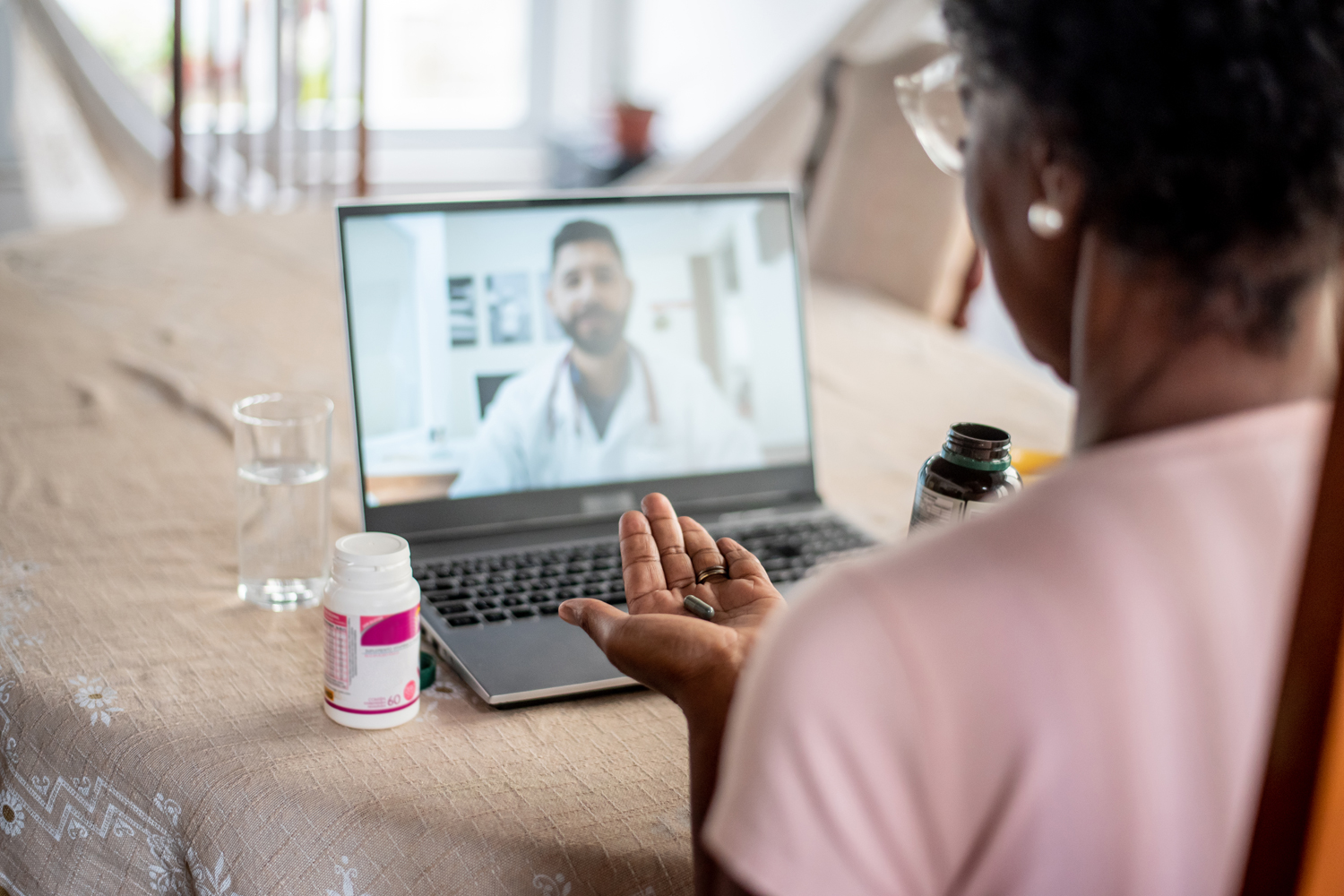A recent study found that video-based telehealth palliative care produced results similar to in-person palliative care for patients with advanced non-small cell lung cancer and their caregivers. The study, presented at the 2024 American Society of Clinical Oncology (ASCO) Annual Meeting in June, found that quality-of-life scores were virtually the same for telehealth and in-person palliative care.
Joseph Greer, the study’s lead investigator and a clinical psychologist at Massachusetts General Hospital in Boston, says telehealth can improve access and efficiency of palliative care for patients with advanced or end-stage cancers.
Barriers Impacting Access to Palliative Care
According to Lindsey Ulin, a palliative care fellow at Massachusetts General Hospital and Dana-Farber Cancer Institute in Boston, who was not involved in the study, palliative care is focused on providing supportive care to people living with cancer and other serious illnesses. Palliative care physicians help manage symptoms and side effects like pain, fatigue and nausea.
According to a 2019 analysis in Quality of Life Research, patients with advanced non-small cell lung cancer and family members or friends who care for them often face physical, emotional and financial challenges that may impact their mental health and overall quality of life. And a 2024 article in American Society of Clinical Oncology Educational Book argued that early integration of palliative care alongside cancer treatment can improve patients’ quality of life.
However, both Greer and Ulin say many barriers limit access to this care for advanced-stage patients and their caregivers. Common roadblocks include hospitals and clinics not offering palliative care, the misconception that palliative care is only for people at the end of life, transportation issues and the cost of care.
“The hope is that telehealth palliative care reduces these burdens for the patient and the caregiver,” Greer says.
Telehealth Palliative Care Study Shows Promising Results
Greer’s study involved 1,250 patients with advanced non-small cell lung cancer and their caregivers. His research team randomly assigned participants to telehealth or in-person early palliative care across 22 cancer centers in the United States.
Participants attended palliative care appointments every four weeks throughout their cancer treatment. At the week 24 assessments, quality-of-life scores were similar for telehealth (99.67) and in-person palliative care (97.67) based on the Functional Assessment of Cancer Therapy-Lung (FACT-L).
Researchers found there wasn’t a significant difference in patient-reported symptoms, such as anxiety and depression, between the groups. “These are fairly standard measures when looking at the effects of palliative care,” Greer says. “We look at these because we’ve found that palliative care clinicians can help patients improve their quality of life, as well as their symptoms of anxiety.”
One difference that study data revealed was less caregiver involvement (36.6%) in virtual palliative care than in-person care (49.7%). “We had hypothesized that, given how convenient telehealth is, it would be easier for caregivers to participate,” Greer says. “We realized that telehealth gives patients more autonomy to decide when to have a caregiver present. But with in-person care, the patient often needs a loved one to help them get to the clinic.”
“In palliative care, we think about the person living with cancer and their caregiver together as a unit,” Ulin says. “Palliative care is an extra layer of support, helping caregivers cope, communicate with other providers, understand a cancer diagnosis and treatment options, and provide resources.”
What the Findings Mean for Lung Cancer Patients and Caregivers
Since telehealth palliative care provides results almost identical to in-person care, many patients and their caregivers may want to switch to video conferencing. “Patients and caregivers can feel reassured that meeting with their palliative care clinician over video is an effective way to access care,” Greer says.
Despite the many benefits telehealth palliative care can offer, changes to policies enacted during the COVID-19 pandemic may impact patient access in the near future. “During the pandemic, there was an explosion of telehealth and video-based care,” Greer says. “But some of those flexibilities are due to expire at the end of the year.”
Greer hopes that the study’s data can shed light on the effectiveness of telehealth palliative care and extend access to this type of health care. “Hopefully, our policymakers will pay attention and continue to reimburse and ensure the maintenance of this type of care moving forward,” he says.
Cancer Today magazine is free to cancer patients, survivors and caregivers who live in the U.S. Subscribe here to receive four issues per year.





